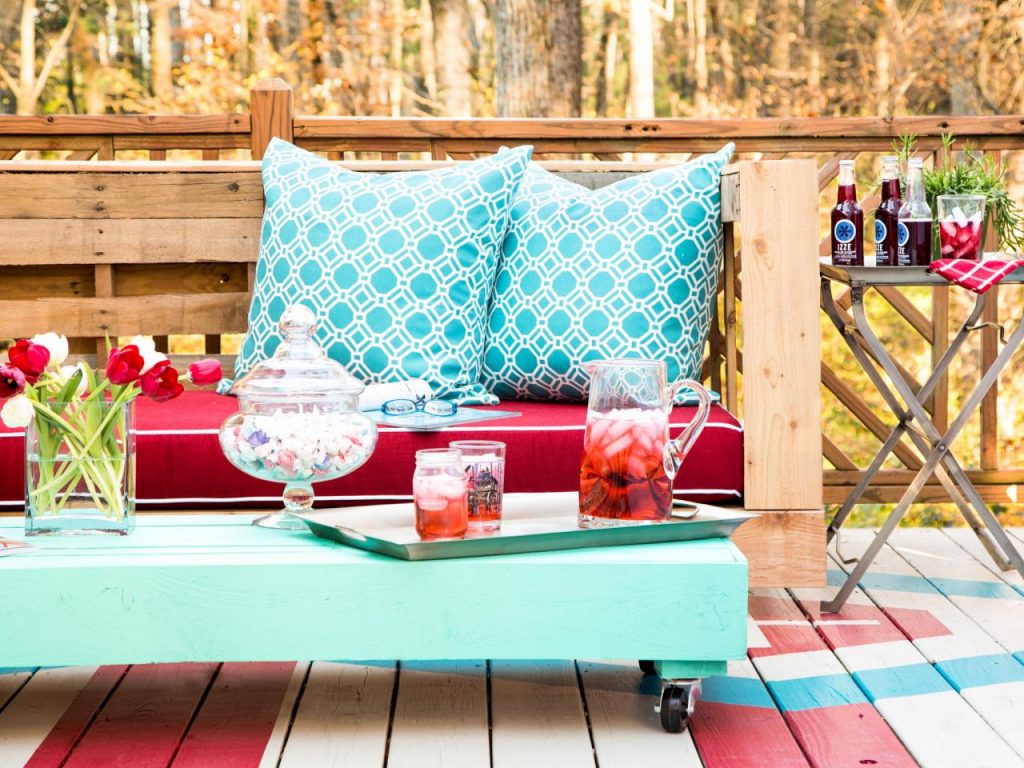Gestion des Déchets à la Maison - 3 étapes Faciles Pour Trier les Déchets
La gestion des déchets revêt une importance capitale de nos jours. Une grande majorité de la société se préoccupe du tri des déchets et s'efforce de le perfectionner - tout cela en raison de la conscience de l'environnement. Il convient de noter que le tri des déchets est obligatoire dans de nombreux pays (par exemple dans tous les pays de l'Union européenne) et est régi par la loi. Le sujet étant très important, il est bon d'en savoir plus.
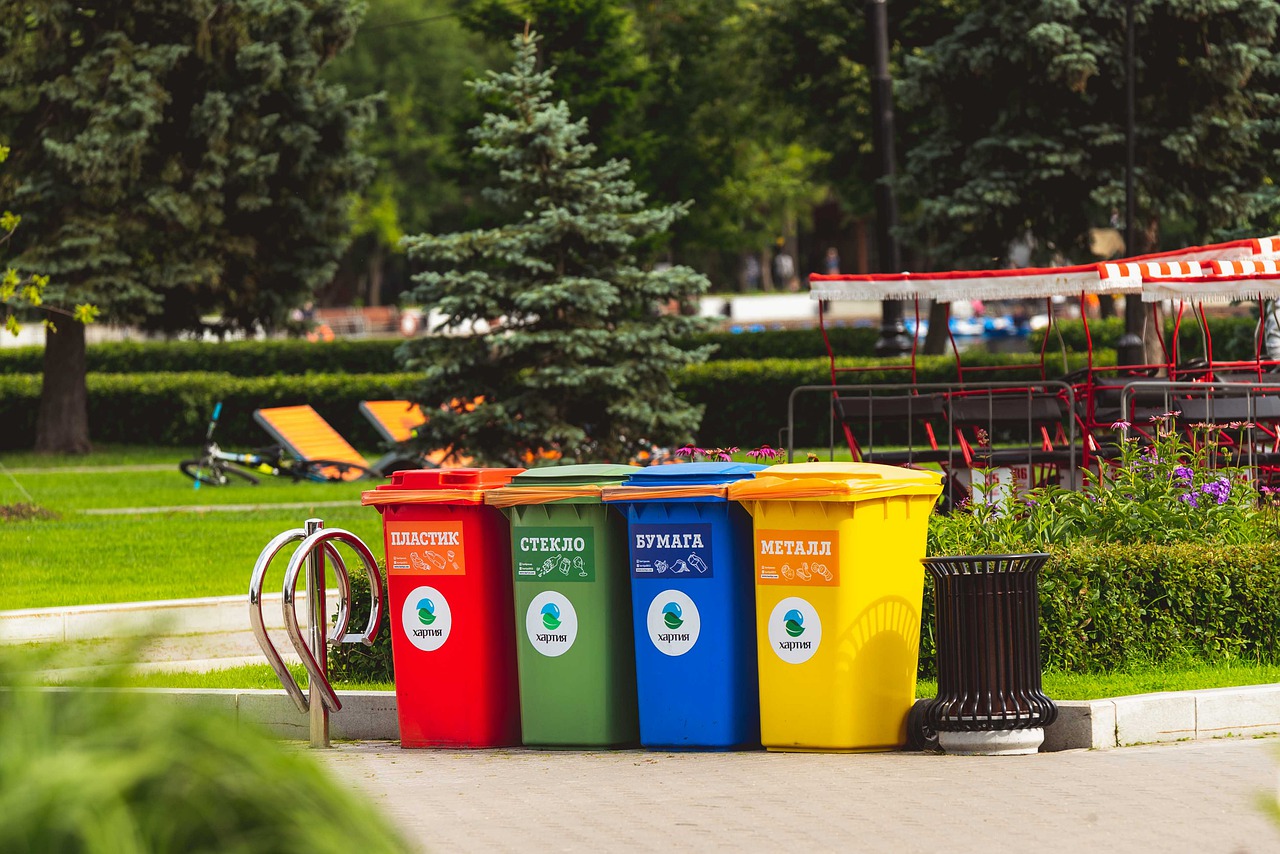
Pourquoi trier les déchets?
La gestion et le tri des déchets sont la responsabilité de chaque citoyen. En triant scrupuleusement les déchets, le processus de recyclage est beaucoup plus facile et de nombreux éléments peuvent être réutilisés. Une grande majorité de la société est consciente du fait que le tri des déchets contribue à nettoyer la Terre et donne l’espoir d’une vie meilleure pour les générations futures.
Une bonne gestion et un bon tri des déchets contribuent à :
- limiter la contamination de l’eau, des plages et de la terre,
- limiter l’utilisation des ressources naturelles, grâce aux processus de recyclage,
- limiter les coûts de gestion des décharges,
- améliorer la qualité de vie,
- trouver des matériaux recyclables et les réutiliser,
- améliorer la conscience écologique.
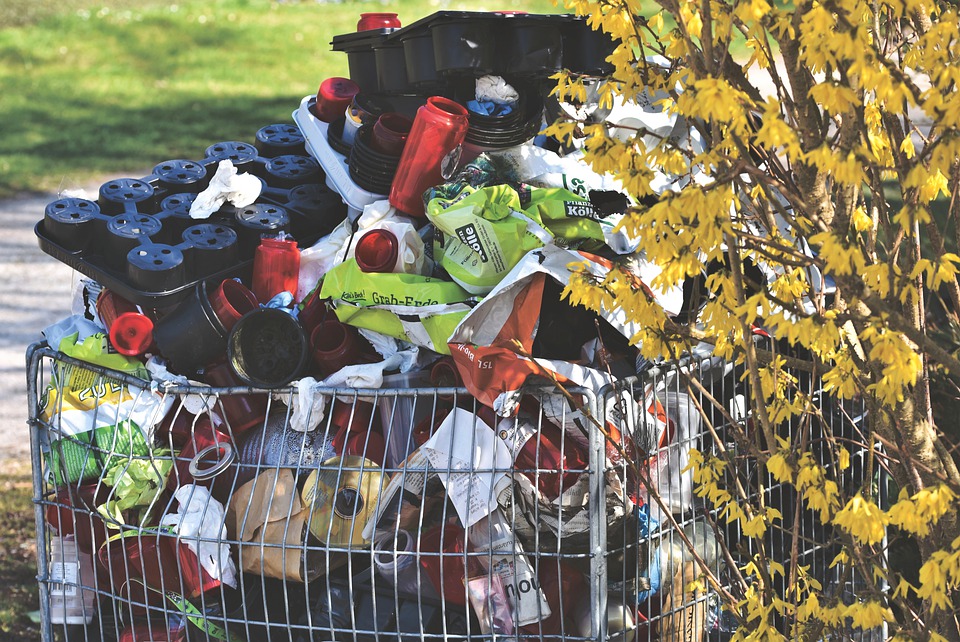
A quoi ressemble la gestion des déchets de nos jours?
Pour que cela soit possible, il est recommandé d’apprendre les règles du tri des déchets, d’autant plus qu’elles ont tendance à changer. En principe, chaque propriétaire de l’Union européenne est tenu de trier ses déchets. Pour l’encourager, de nombreux pays ont employé une stratégie selon laquelle si quelqu’un décide de ne pas trier ses déchets, leur collecte coûte tout simplement plus cher. Pour cette raison, le tri des déchets est plus économique et, par conséquent, plus de personnes s’en préoccupent.
Ces taxes ont été mises en place principalement en raison du faible niveau de sensibilisation des citoyens - selon les statistiques officielles, seulement 66% de la société pratiquait le tri des déchets.
Tri des déchets - quelles sont les couleurs des bacs de recyclage?
La gestion des déchets est généralement basée sur cinq bacs de recyclage. Il n’existe pas de code de couleur universel unique pour ces bacs - les couleurs varient d’un pays à l’autre. De nombreux pays européens (par exemple l’Allemagne, la Pologne, la Slovaquie) ont utilisé le code couleur suivant :
- bleu - pour le papier,
- vert - pour le verre,
- jaune - pour le métal et le plastique,
- brun - pour les déchets biologiques,
- noir - pour les déchets non recyclables.
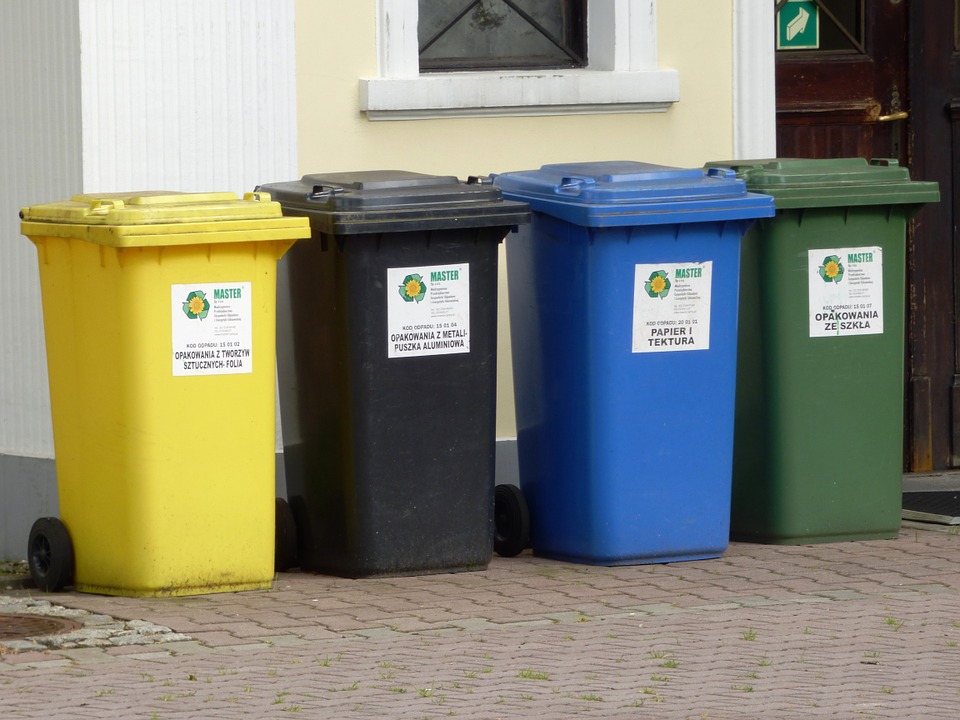
Il est important de faire attention lors du tri des déchets. La gestion des déchets à la maison n’est simple qu’en apparence - dans certains cas, il faut réfléchir pour savoir si un objet particulier doit être jeté dans une poubelle particulière.
Les plats en verre allant au four sont un bon exemple. En théorie, ils devraient être placés dans la poubelle verte (selon le code couleur mentionné). En fait, ce type de déchets va dans la poubelle noire, avec d’autres articles non recyclables.
Gestion des déchets - que mettre dans un sac poubelle?
À l’instar des couleurs des poubelles de recyclage, de nombreux pays utilisent également les mêmes couleurs pour les sacs poubelle, afin qu’il soit plus facile de les différencier lors des étapes ultérieures de la gestion des déchets. Quel que soit le code couleur, il est très important de savoir comment séparer les déchets, afin que le tri des déchets soit réellement efficace. Par exemple, une benne à papier ne doit contenir que des emballages en papier propres, des cartons, des magazines, des journaux, des cahiers. Vous ne devriez pas y jeter des articles tels que :
- les reçus,
- sacs en papier gras.
Le bac de recyclage du plastique et du métal est destiné aux canettes et aux bouteilles en plastique écrasées.
Le bac de recyclage du verre recueille les bouteilles et les bocaux en verre sans bouchon. Parfois, les conteneurs sont divisés entre verre transparent, brun et vert.
Une poubelle pour les biodéchets est destinée aux articles compostables tels que les coquilles d’œuf, le marc de café, les feuilles de thé et les restes de nourriture, mais sans les os, la viande et la graisse.
La poubelle verte recueille les déchets de votre jardin - herbe coupée, feuilles sèches, branches fragmentées et scories.
La poubelle mixte recueille tout ce qui ne peut pas être recyclé. Mais n’oubliez pas que vous ne pouvez pas y jeter des débris, des restes de peinture, des piles, des ampoules électriques et des médicaments périmés.
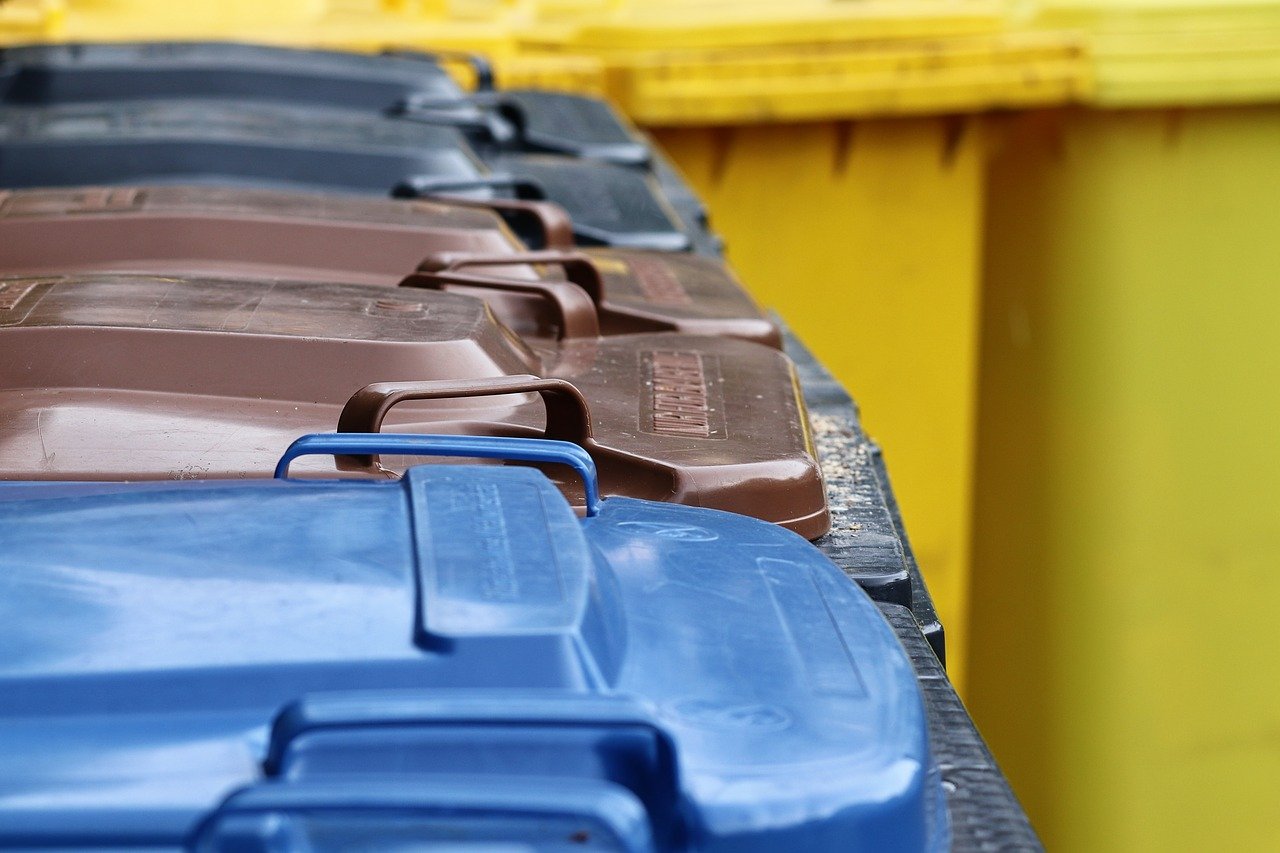
Comment se débarrasser des appareils électroniques, des ampoules électriques, des médicaments périmés ou du polystyrène?
L’évolution des réglementations en matière de gestion des déchets peut entraîner une grande confusion et rendre le tri des déchets assez délicat. Il existe certains types de déchets problématiques tels que :
- piles,
- ampoules électriques.
Les piles et les ampoules électriques font partie de la catégorie des déchets électroniques. Ces déchets ne peuvent pas être jetés dans les poubelles de recyclage standard. Pour cette raison, les autorités locales désignent des points de collecte spéciaux pour les déchets électroniques.
Les ampoules que l’on trouve dans les lampes - les ampoules LED, en particulier - sont soumises à la garantie du fabricant. Si elles grillent avant l’expiration de la garantie, il suffit de les retourner au magasin avec le ticket de caisse pour qu’elles soient remplacées. En outre, certains magasins d’éclairage proposent des conteneurs spéciaux où vous pouvez vous débarrasser des anciennes ampoules LED.
Il en va de même pour les piles. Certains magasins collectent les vieilles piles - surveillez les conteneurs spéciaux.

Les médicaments périmés ne peuvent pas non plus atterrir dans les poubelles ordinaires. Il faut les apporter à une pharmacie. Le polystyrène propre peut être jeté dans un bac de recyclage du plastique et du métal. S’il est sale, mettez-le dans la poubelle de déchets mixtes.
Si vous rénovez votre maison et que vous savez déjà que vous allez générer beaucoup de déchets, comme par exemple du polystyrène, envisagez de commander un conteneur spécial pour les déchets de construction. N’oubliez pas de respecter les dispositions légales.
Tri des déchets de cuisine - que faire des emballages d’œufs et de yaourts?
Le tri des déchets de cuisine peut être problématique. Certaines personnes se demandent ce qu’il faut faire des coquilles d’œufs. Comment recycler ce type de déchets ? Conformément à la réglementation, les déchets de cuisine, tels que les coquilles d’œuf, sont mis dans un bac de recyclage biodégradable.
Le marc de café usagé doit être placé dans le même conteneur. La viande et les os sont les seules exceptions en ce qui concerne les déchets de cuisine - ils vont dans le bac de recyclage mixte.
L’emballage du yaourt, s’il est en plastique, va dans un conteneur en plastique et en métal - mais seulement s’il est propre. Sinon, il va dans la poubelle mixte. Donc, si vous avez mangé un yaourt, rincez l’emballage avant de le jeter.
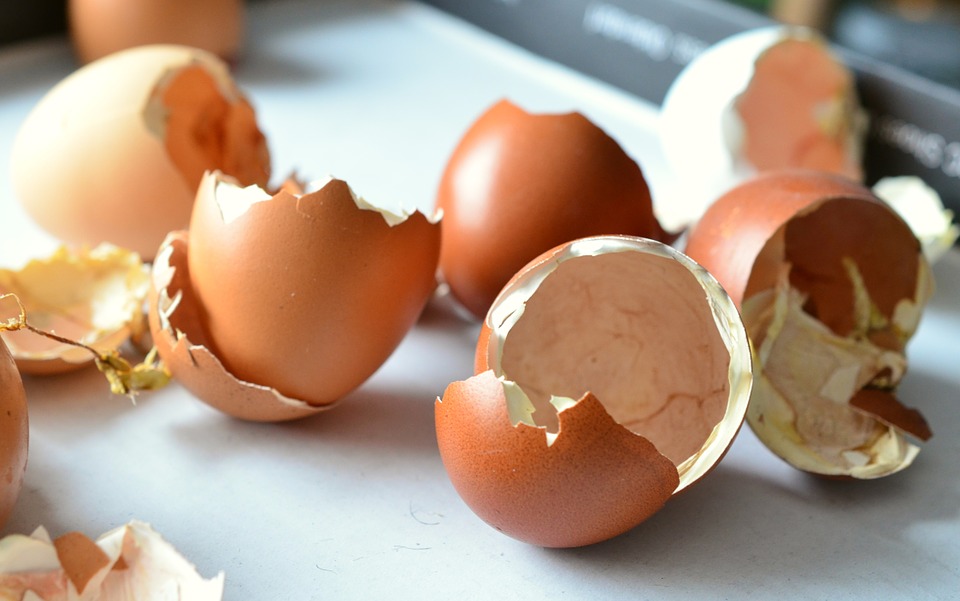
Gestion des déchets encombrants - comment se débarrasser des gros objets?
Les déchets encombrants sont, en d’autres termes, tous les déchets qui sont trop volumineux pour être éliminés normalement. Il s’agit, par exemple, de :
- vieux meubles,
- vélos,
- poussettes,
- les vieux jouets de grande taille.
Pour ce type de déchets, chaque ville ou quartier d’une grande ville dispose d’un calendrier de collecte des déchets encombrants. Généralement, les déchets sont déposés à l’extérieur de la propriété ou près de l’abri à poubelles, afin qu’ils puissent être ramassés par les collecteurs de déchets.
Les astuces de gestion des déchets - comment recycler à la maison et se faciliter la vie?
Le tri des déchets à la maison peut être beaucoup plus agréable et plus facile si vous suivez certaines règles. Tout d’abord, veillez à vous procurer des bacs de recyclage spéciaux. Non seulement ils facilitent le tri des déchets, mais ils sont généralement dotés de symboles spéciaux et même d’instructions sur ce qui va où.
Avant de jeter un récipient alimentaire, assurez-vous de le nettoyer soigneusement. Veillez à jeter les déchets biologiques et le verre sans sac en plastique. Si vous triez les bouteilles en plastique et en verre, veillez à retirer les bouchons. Les bouteilles en plastique et les canettes en métal peuvent être écrasées - de cette façon, elles prennent beaucoup moins de place.

📍 Comment recycler à la maison?
Veillez à trier les déchets conformément à toutes les règles et réglementations - dans différents conteneurs et sacs. Faites attention à ce qui va dans chaque poubelle. Elles sont de couleur différente pour faciliter la gestion des déchets.
Articles de fond




